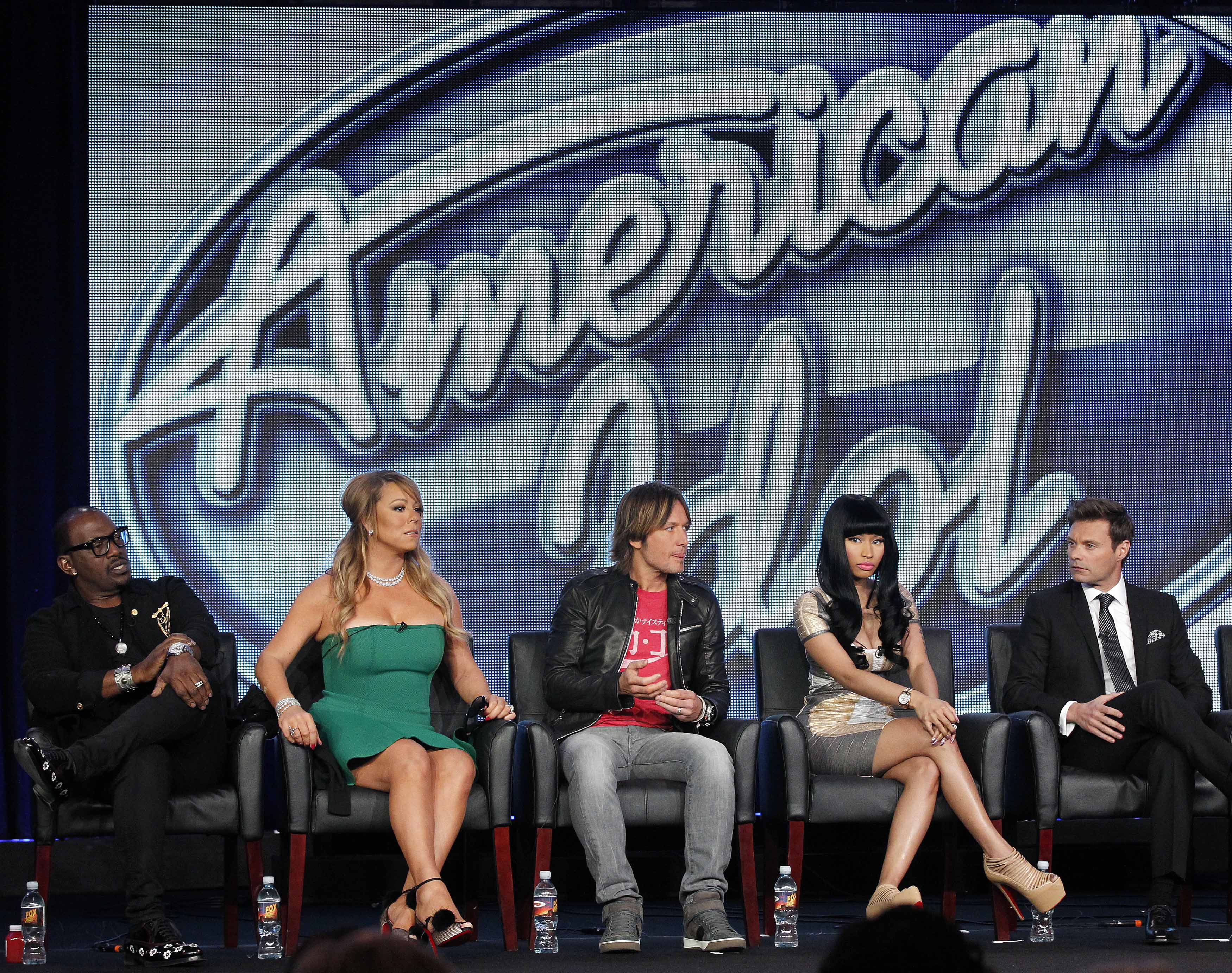
American popular culture has long glamorized the unhealthy and unsavory. We go to the movies and watch attractive people puffing cigarettes or mafiosos strutting around in sharkskin suits killing off their enemies. We turn on our radios and hear a rap song that celebrates the violent excess of Scarface—or a pop song about dancing with Molly. In advance of the Zócalo/Getty Center event “Why Do We Need Glamour?” we asked several thinkers the following question: What do we glamorize in 2013 that we shouldn’t?

In America, we have glamorized going “green.” These days, it is downright trendy to buy clothes made of organic cotton, donate money to save the rainforest, or drive a hybrid vehicle. Elegant restaurants and gourmet grocery stores advertise their victuals as having been caught or harvested in a renewable manner. Cosmetic labels detail products’ environmentally friendly ingredients.
There are serious consequences to glamorizing possible solutions to the environmental crisis we face. Many of us believe we have done our part when we buy expensive products that we hope have less harmful production impacts. We are falsely comforted in thinking that these purchases alone are enough to safeguard the future.
The reality is that the consumption of natural resources by the average American remains unsustainable—whether or not we buy “eco-friendly” products. Too often, eco-friendly is synonymous with guilt-free—it creates an opportunity for us to continue to spend and ignore. It is a sexy catchword for corporations to use while we are encouraged to consume and waste.
The clear trend is that many sustainable products are also more costly; this expense may be an unavoidable part of production, or it may be due to marketing ploys. Unfortunately, either way, it creates a veneer of luxury that lulls us into disregarding sometimes simpler, yet effective, measures and policies that should be considered. The environment becomes something only the elite and affluent can afford to care about.
By altering our perception of environmental responsibility, we have created facile remedies that are non-inclusive and insufficient. It’s certainly easier than taking a good hard look at ourselves and grappling with the changes necessary in our individual lives and in our society to ensure a viable planet.
Min-Yuen Cynthia Cheung, M.D., is a practicing internist based in Texas. Her areas of interest are in One Health, the intersection of human, animal, and environmental health, and Zoobiquity, a species-spanning approach to medicine. She has worked with veterinarians at the Los Angeles Zoo and the Houston Zoo.

As the holidays approach, we return to our most loved stories, such as It’s a Wonderful Life. This classic film reminds us that a life in which a man protects and cares for the people around him is well lived. The wealthy businessman, Mr. Potter, is the villain of the story, because he hurts others for his own gain, and we see George Bailey, though penniless, as the “richest man in town.”
Paradoxically, our culture also glamorizes men who consistently hurt the people around them—those we should see as villains. As a civilized society, we should have outgrown the tendency to glamorize and excuse men who show patterns of abuse and destruction. In fact, research shows that newspapers and magazines go out of their way to blame a woman who is the victim of domestic abuse and to let the male abuser off the hook. For example, in a series of People magazine articles about actor Charlie Sheen and his wife, Brooke, the writers cite her threats to divorce Sheen as a potential reason for him to attack her with a knife. Then, without irony, the article refers to her drinking problem and quotes an official who cautions the reader not to jump to conclusions just because Sheen was accused of a crime.
When violent men are celebrities, their fans often fiercely defend them while blaming their victims. This has happened in the case of Rihanna and Chris Brown. We’ve watched as Brown is defended by fans—only to end up in the headlines yet again for lashing out at the people around him. By my reckoning, he may be a celebrity with a large bank account, but a serial abuser like Chris Brown is not “the richest man in town.”
Karen E. Dill-Shackleford, Ph.D., is a media psychologist and the author of How Fantasy Becomes Reality (Oxford University Press, 2009) and the editor of the Oxford Handbook of Media Psychology (2013).

Has celebrity been too glamorized? So many contestants clamor for the opportunity to be on American Idol or The Voice. We long to be discovered, to be in the spotlight, to take a bow. Seemingly everyday professions have become a competition to be named Top Chef. A dog trainer is now the Dog Whisperer and even antiquing has been turned into reality TV. Shows like Ice Truckers and The Deadliest Catch glamorize hard work but may also prompt viewers to thrill-seeking. These shows encourage us to abandon the mundane middle in an effort to stand apart from the crowd. No one wants a job or relationship that is ordinary or routine.
And in a world of reality television and viral YouTube videos, we have better odds at a fleeting moment in the spotlight. As a college professor, I am astounded by how many students expect to be famous for at least 15 minutes. At Pepperdine, we’ve had alums featured on The Amazing Race, Survivor, and Million Dollar Listing. The real challenges arrive when the cameras stop rolling—after the thrill of battling it out on an island and the fleeting fame. It is tough to return to “normal” when you’ve felt like a star. Yet there are not many second acts in reality TV. In my classes, we wrestle with the larger question: How do we perform when the audience is not watching? And what if the spotlight never turns to us? How many of America’s shooting rampages involve some desperate cry for attention and validation on a national stage? YouTube has become our trusted confessor, therapist, and confidant.
Words such as fame and famous come from fama, the Latin root roughly translated as “manifest deeds.” In the past, fame was earned through distinguished actions—on the battlefield, via leadership, through remarkable poetry or words. We still confirm fame upon athletes, and we can measure why they are exceptional. But achieving infamy has become such a serious, and hollow, pursuit. What is the end goal for today’s students: Getting beyond the velvet rope? Securing celebrity swag? Perhaps our hunger for fame is rooted in a longing for immortality. I hope that my students recover fame—rooted in deeds, tested over time—and find the glamour in simply a job well done.
Craig Detweiler is professor of communication and director of the Center for Entertainment, Media, and Culture at Pepperdine University. His latest book is iGods: How Technology Shapes our Spiritual and Social Lives.

Since penises are usually carefully hidden from sight, how can we glamorize them? A number of discourses have sprung up to carefully regulate how we show and talk about penises. Visually, they seem to come in only two acceptable sizes: big and bigger. Big penises are supposedly impressive and tell us something about a man’s masculinity, sexuality, and power.
Humor works to reinforce this notion by making men with small penises the butts of jokes. Verbal penis-size jokes since the late ’60s have been a staple in movies—e.g., “Looks like a penis only smaller.” Recently in movies such as The Hangover, however, the joke is visual, and we see the small penis. This binary notion of masculinity as glamorous when it is big, awesome, and powerful, and comic and pathetic when it is small and fails, has consequences beyond individuals and sexuality. The character with the small penis in The Hangover is Asian and fits a disturbing racial pattern. In the U.S. today, penis size plays a key role in racial stereotyping, for example, tying undersexed, perverse, or comic Asian men to small penises.
Many film critics described the movie Shame as being about sex addiction and anything but glamorous. Nevertheless, the media paid much attention to Michael Fassbender’s large penis. For some spectators, it was a notable feature, perhaps even a sign of his character’s sexual excess and ability to live the life he does. A small man would be “unbelievable.”
We shouldn’t glamorize one penis shape and size. To avoid that, we have to show a full range of men, challenging the predictable reactions of laughter or awe. The problem is not explicit sexual imagery; that offers an important opportunity.
Peter Lehman is the director of the Center for Film, Media and Popular Culture at Arizona State University. He is the author of Running Scared: Masculinity and the Representation of the Male Body, New Edition and coauthor of Lady Chatterley’s Legacy in the Movies: Sex, Brains and Body Guys.



